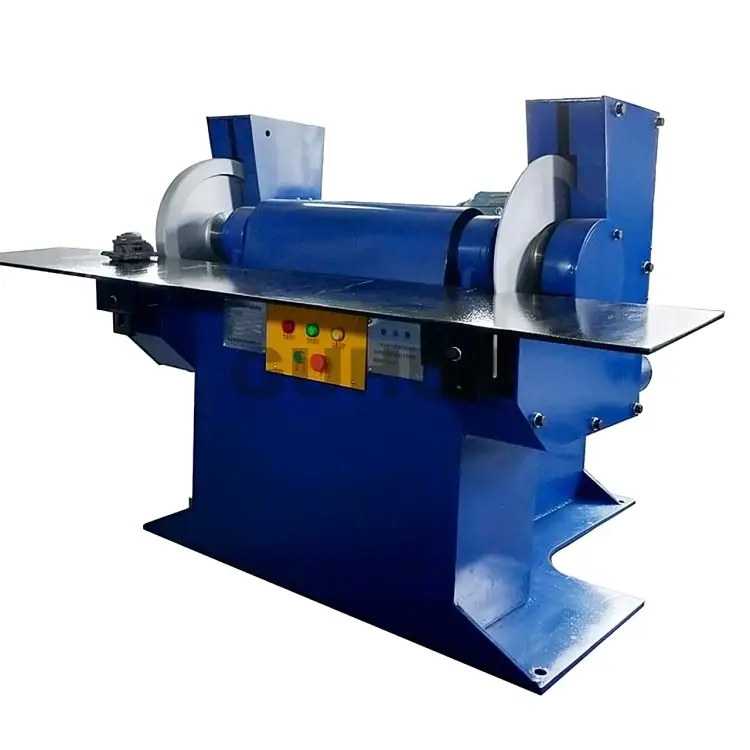Grinding plates are essential components in various industries, from food processing to mining and construction. They serve as the critical interface between materials and the grinding mechanism, impacting both efficiency and product quality. Given their importance, it’s crucial to maintain these plates to ensure they last as long as possible. Here are some practical maintenance tips to help extend the lifespan of your grinding plates.
1. Regular Inspection
Frequent inspections of your grinding plates are vital for identifying wear and tear early on. Look for signs of damage such as cracks, chips, or excessive wear. A Grinding Plate Manufacturer can provide guidelines on the expected lifespan of your specific plates, so you can establish a regular inspection schedule based on this information.
Action Steps:
- Schedule inspections at regular intervals (weekly or monthly).
- Use a caliper to measure the thickness and ensure it’s within acceptable limits.
- Document your findings to track wear over time.
2. Proper Cleaning
Dust, debris, and residue can accumulate on grinding plates, affecting their performance. Proper cleaning not only keeps the plates functional but also prevents contaminants from affecting the materials being processed.
Action Steps:
- Use a soft brush or air compressor to remove loose debris.
- For stubborn residue, consider using a mild detergent with warm water.
- Ensure that all cleaning agents are compatible with the materials of the grinding plates.
3. Optimize Grinding Conditions
The conditions under which grinding takes place can significantly impact the lifespan of grinding plates. Factors like speed, pressure, and material type all play a role in wear.
Action Steps:
- Consult the specifications from your Grinding Plate Manufacturer to optimize settings.
- Avoid overloading the grinding plates, which can lead to excessive wear and tear.
- Monitor the grinding process to ensure that the plates are operating within recommended parameters.
4. Use Quality Materials
The materials you grind can have a huge impact on the wear of your grinding plates. Harder materials can lead to quicker degradation, while softer materials tend to be easier on the plates.
Action Steps:
- When possible, use materials recommended by the Grinding Plate Manufacturer.
- Consider implementing a material testing phase to determine how different materials affect wear rates.
- Keep a log of materials processed to identify any that may cause premature wear.
5. Ensure Proper Installation
Improper installation can lead to uneven wear and inefficient grinding. It’s essential to follow the manufacturer’s installation instructions carefully.
Action Steps:
- Read the installation manual provided by your Grinding Plate Manufacturer.
- Make sure that all bolts and screws are tightened to the recommended torque specifications.
- Use alignment tools to ensure plates are properly aligned before starting the grinding process.
6. Use Lubrication Wisely
While many grinding plates do not require lubrication, some systems benefit from it. Lubrication can reduce friction and help prevent overheating.
Action Steps:
- Check the manufacturer’s guidelines on lubrication; excessive or incorrect lubrication can cause problems.
- Use only the recommended type of lubricant.
- Apply lubricant sparingly and ensure it doesn’t contaminate the materials being ground.
7. Monitor Temperature
Excessive heat can damage grinding plates and lead to failure. Monitoring temperature can help prevent overheating, which is crucial for extending the lifespan of your plates.
Action Steps:
- Install temperature gauges near your grinding setup.
- Set alerts for temperature thresholds that, when exceeded, warrant immediate inspection.
- Consider implementing cooling solutions if you consistently encounter overheating issues.
8. Train Your Operators
Even the best grinding plates can suffer from poor operational practices. Training operators on best practices can significantly extend the lifespan of grinding plates.
Action Steps:
- Develop a training program that covers proper usage, maintenance, and safety.
- Encourage operators to report any irregularities during grinding, such as unusual noises or vibrations.
- Regularly update training materials based on the latest guidelines from your Grinding Plate Manufacturer.
9. Schedule Routine Maintenance
Regular maintenance should not be limited to just inspections and cleaning. Scheduled maintenance can include checking wear patterns, replacing worn parts, and ensuring all components are functioning correctly.
Action Steps:
- Create a maintenance calendar that includes routine checks, cleaning, and part replacements.
- Keep spare parts on hand for quick replacements when wear is detected.
- Involve your grinding plate manufacturer in establishing a maintenance plan that suits your operational needs.
10. Document and Analyze Performance
Keeping records of performance metrics can help you understand when your grinding plates are wearing out and under what conditions. This data can be invaluable for making informed decisions about maintenance and replacement.
Action Steps:
- Use software or a simple spreadsheet to track performance metrics, including grinding time, material types, and wear rates.
- Analyze the data to identify trends that may suggest when to replace or service grinding plates.
- Share this information with your Grinding Plate Manufacturer for additional insights into improving efficiency and longevity.
Conclusion
Maintaining grinding plates is crucial for extending their lifespan and ensuring optimal performance. By following these maintenance tips, you can minimize wear, improve efficiency, and ultimately save costs associated with replacement and downtime. Always refer to the guidance provided by your Grinding Plate Manufacturer, as they can offer tailored advice based on the specific materials and conditions of your operation. With proper care, your grinding plates can deliver consistent performance for years to come.

